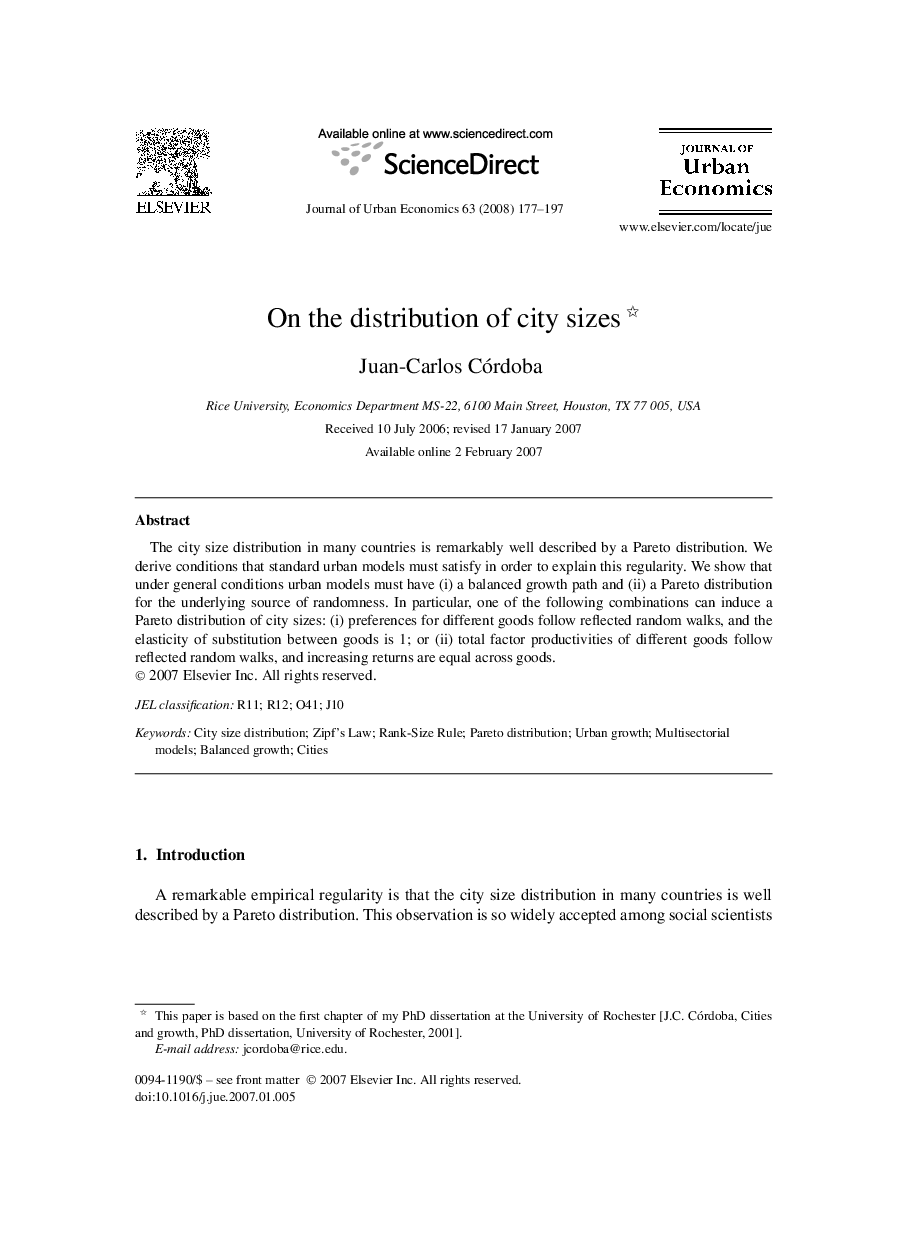| Article ID | Journal | Published Year | Pages | File Type |
|---|---|---|---|---|
| 971627 | Journal of Urban Economics | 2008 | 21 Pages |
Abstract
The city size distribution in many countries is remarkably well described by a Pareto distribution. We derive conditions that standard urban models must satisfy in order to explain this regularity. We show that under general conditions urban models must have (i) a balanced growth path and (ii) a Pareto distribution for the underlying source of randomness. In particular, one of the following combinations can induce a Pareto distribution of city sizes: (i) preferences for different goods follow reflected random walks, and the elasticity of substitution between goods is 1; or (ii) total factor productivities of different goods follow reflected random walks, and increasing returns are equal across goods.
Related Topics
Social Sciences and Humanities
Economics, Econometrics and Finance
Economics and Econometrics
Authors
Juan-Carlos Córdoba,
